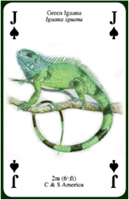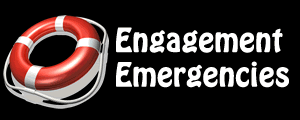Activate
 Go to the Google Game: Creatures wikispace to try a Google Game. Does it contain the following four elements?
Go to the Google Game: Creatures wikispace to try a Google Game. Does it contain the following four elements?
All games have four elements. When you create a game, be sure to GRAF it.
- Goal. You need a way to win or achieve the goal.
As educators we need to match goals with purposes and reasons for learning.
- Rules. You need to know what you may and may not do.
As educators, we need to provide guidelines for learning.
- Action and Attitude. You must do something along the way. Make it fun and interesting.
As educators we need to make leanring meaningful and challenging.
- Feedback. You need to know how you are doing.
As educators, we need to provide ongoing opportunities to self, peer, and teacher assessment.
Try one of the following games. Think about what type of game you could design that would connect Google tools with a content area search.
- Go to the Dr. Seuss Quote Game. Randomly choose a quote and search to find out if the quote is really from Dr. Seuss. Notice how the random number generator can be embedded into an activity.
- Go to Meaningful Monuments. Travel the world collecting monuments from different countries. Score points based on how much you know about each monument. Use Google images along the way. Brainstorm other ways Google Images could be used.
- Go to Mad Scientist Game. Level up by moving from Igor the Assistant to Mad Scientist. The winner is the Mad Scientist receiving the most votes. The winning experiment will be demonstrated in class. Along the way, use Google search and Google video search.
- Go to Goofy Global News. Summarize news stories and write your own stories. Can your friends tell the fact from the fake? Explore the Weekly World News and other magazine archives at Google Books.
- Go to the Google Doodle Game. Explore Google Doodles and make your own.
- Go to The Grand Adventure. Use lots of Google tools to go on a Grand Adventure around the world.
Game Tools
Use the Dynamic Paper from Illuminations to create nets, graph paper, number lines, number grids, tessellations, shapes, spinners and more.
Virtual Game Boards
- Glogster. Use Glogster to create a clickable game board for activities.
- Bubbl.us. Use Bubbl.us or any of the concept mapping tools to create a game board. Use a flowchart approach, move up through a hierachy or take a different visual approach.
Seek tools that don't have distracting ads. Think about how some of the following tools might be used to design activities:
Game Makers. Use a game show atmosphere. Use laptops for students to search for answers.
- Jeopardy Labs. This tools lets you create a Jeopardy game to use online.
- Who Wants to be a Millionaire? This tool can be used to create an offline or online game.
Whiteboard Tools. Keep score in front of the classroom on a whiteboard.
- Quiz Scorer 2. This tool provides a way to keep track of scores for two teams.
- Quiz Scorer 4. This tool provides a way to keep track of scores for four teams.
QR Tools. Incorporate QR codes into your gameplay.
General Sources. There are lots of generators and tools that could be integrated into the gaming atmosphere.
- Simulators
- Playing Card Shuffler - Best Option
- Coin Flipper - Best Option
- Dice Roller - Best Option
- Spinner - Best Option
- Random Numbers. Use these to choose numbers for turns or choices.
- List Randomizer
- Random Words - Best Option
- Random Calendar Date Generator - Best Option
- Random Clock Time Generator - Best Option
- Random Decimal Fraction Generator - Best Option
- Random Integer Generator - Best Option
- Random Integer Set Generator - Best Option
- Random Gaussian Number Generator - Best Option
- Random Geographic Coordinates - Best Option
- Random Password Generator - Best Option
- Random String Generator - Best Option
- Random Sequence Generator - Best Option
- Widgets - Integer Widget Wizard
- Spinners
- Print Paper Spinner from Illuminations
Card Games
Post Card Games. Use Postcards as a way for students to share what they've learned. Go to Endangered Animals Postcards or Australia Animals Postcards. Pick an animal. Locate information. Summarize, cite source, and send card
Case Cards. Create paper-based cards (print from PowerPoint) that jumpstart a search. Roll the Dice to determine your case file number. Provide basic information. Students must solve the problem. Use a bulletin board in the classroom to classify cards or share answers.
- Animal Cases. Show animal homes and try to determine who lives there.
- Artifact Cases. Show images of artifacts and try to determine where they go in the museum.
- State Cases. Show an attraction. Find out where that attraction is located and put it on the class map or in Google Maps.
- Invasive Species. Where does this plant or animal belong and not belong?
Use Trading Card Generators. Create your own cards.
- Character Trading Cards from ReadWriteThink
- Trading Cards from BigHugeLabs
Learn more at Google Games.
 Try It!
Try It!
Design a simple Google Game for a particular instructional situation. It should have GRAF: Goals, Rules, Attitudes/Actions, and Feedback.

